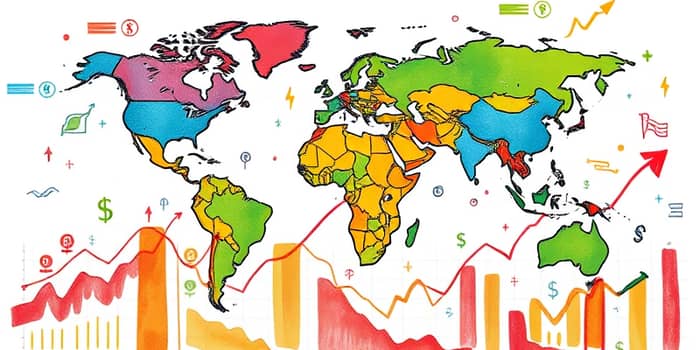
In an increasingly interconnected world, investors seek strategies that transcend borders and asset classes. Global macro investing offers a blueprint to harness sweeping economic transformations and geopolitical events for portfolio growth and protection.
At its core, global macro investing interprets large-scale economic trends—from interest rates and currency valuations to trade dynamics and political shifts. Rather than focusing on individual companies, managers assess cross-border forces shaping markets. This top-down approach combines fundamental and technical analysis, aligning positions with the evolving macro environment.
Discretionary managers rely on seasoned judgment, while systematic funds deploy quantitative, rules-based models to capture momentum or relative value opportunities. Both styles flexibly allocate capital across public equities, fixed income, currencies, commodities and derivatives.
Global macro practitioners employ a diverse toolkit to express views on economic cycles and policy moves. Strategies often include:
Major asset classes in play encompass:
Leverage is a hallmark of many macro funds, with gearing ratios up to 6–7x advancing amplified return potential—and correspondingly higher risk. Risk management techniques include stop-loss orders, dynamic hedges and scenario analysis to navigate sudden regime shifts.
Several persistent trends define the macro landscape heading into 2025:
Global trade growth has contracted from 5% in the 2000s to under 3% in the 2020s. Inflation volatility remains elevated amid supply chain realignments and a shift from monetary to expansive fiscal measures.
Investors eye fragmentation of supply networks and rising protectionism as fertile grounds for event-driven positioning, from tariffs to regional trade blocs.
A robust analytical framework integrates both macro and micro indicators:
Leading indicators, such as purchasing manager indices (PMIs) and yield curve inversions, often presage turning points. Combining these signals enables adaptive asset allocation, from shortening duration in bond portfolios to rotating currency exposures.
Despite their appeal, global macro strategies face several challenges:
High leverage and volatility can lead to outsized losses if predictions falter. regime shifts in monetary policy—such as unexpected central bank tightening—may upend established trades. During episodes of massive quantitative easing, correlations across asset classes can converge, undermining diversification benefits.
Effective risk management demands rigorous stress testing, scenario analysis and disciplined position sizing. Many funds cap drawdowns and employ dynamic hedges to mitigate tail risks in fast-moving markets.
Global macro has produced legendary investors and landmark trades. George Soros’s 1992 short of the Bank of England sterling position generated returns exceeding $1 billion. Stanley Druckenmiller and Ray Dalio also etched their names through timely shifts during the 2008 financial crisis and the COVID-19 market dislocation.
More recent events—Brexit in 2016, pandemic-driven volatility in 2020, supply chain shocks post-2022 and the 2022–25 inflation surge—provided ample opportunities for nimble macro managers to capitalize on market dislocations.
Looking ahead, several thematic plays stand out:
Emerging markets face mounting debt burdens and stagflation risks, creating windows for tactical underweight or hedging strategies.
Global macro investing demands a holistic view of the world economy, rigorous analysis and agile execution. By blending discretionary insight with systematic processes, investors can seek uncorrelated returns and defensive ballast against traditional asset drawdowns.
As the pace of economic change accelerates—driven by policy regime shifts, climate imperatives and technological adoption—the ability to anticipate and react to macro-driven turning points will define future success.
Armed with data, discipline and diverse strategies, global macro investors stand poised to navigate uncertainty and harness the power of large-scale economic shifts.
References













